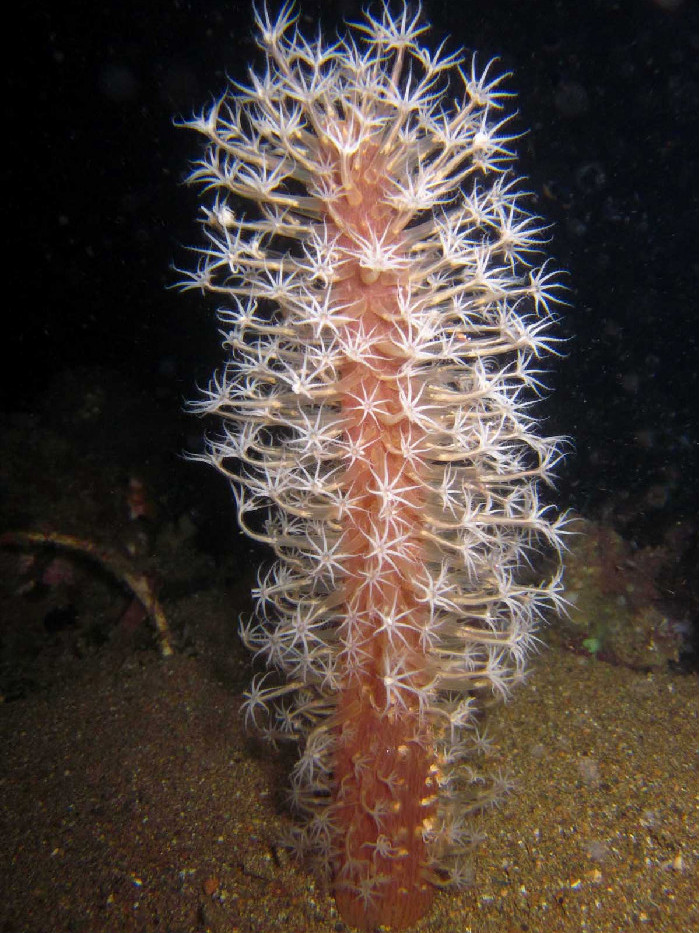Colorful Sea Pens Decorate Ocean Floor

As their name suggests, sea pens can look like writing pens, or they can resemble feathers, whips or worms. But these diverse and delicate underwater animals, which are a type of coral, are also hard to pin down: A single sea pen is both an individual and a colony.
"All corals can be looked at in two ways; they can be looked at as a colony or they can be an individual with many mouths," said Gary Williams, curator of invertebrate zoology at the California Academy of Sciences. "I just call them colonies."
The latest research, discovery and biology of these marine creatures are the subjects of an article written by Williams for the July 29 edition of the journal PLoS ONE. [Strange Coral: A Gallery of Sea Pens]
Sea pens are a type of octocoral, named for the eight stinging tentacles they use to capture plankton (tiny floating plants and animals) to feed themselves. The basic unit of a sea pen, like other corals, is a polyp, which consists of a sac-like body cavity enclosed by a mouth and surrounded by a ring of tentacles. Once it has found the perfect substrate — sand, mud, rubble or, in a few cases, solid rock — a larva settles down and becomes the primary polyp. It buds off into daughter polyps, and the sea pen grows. All are supported on a stemlike structure.
Some sea pens use a bulb inflated with water to anchor them to the sea floor. All have hard, internal skeletons, and at least some of them can glow in the dark.
While the larvae of some species settle close to their parents, others are carried great distances on ocean currents.
"It's like wind and pollen, but you are in seawater with currents," Williams said.
Get the world’s most fascinating discoveries delivered straight to your inbox.
Although many species live in shallow water, others have been found as deep as 20,013 feet (6,100 meters) below the surface. One species of Umbellula has been discovered living in cold, pitch-black water near Antarctica. It grows about 10 feet (3 meters) long with a big, flat head of polyps at its end, their tentacles picking food out of the water as the head is pushed along by the current, Williams said.
Most sea pens, however, grow to between 2 inches and 6 feet, 7 inches (5 centimeters to 2 meters) in height, he said.
You can follow LiveScience writer Wynne Parry on Twitter @Wynne_Parry.



